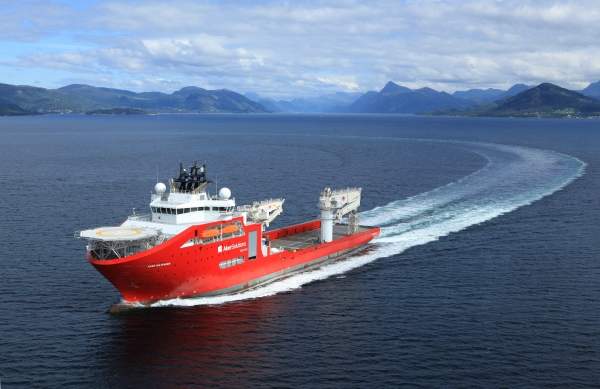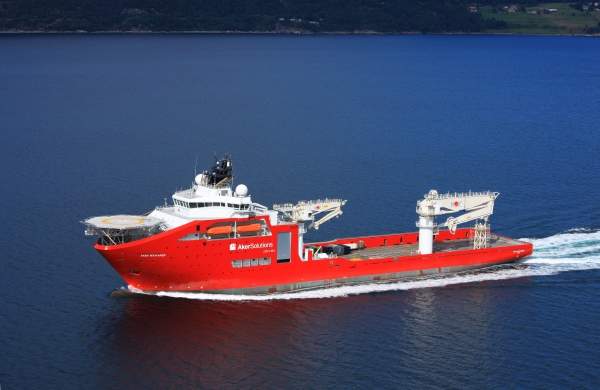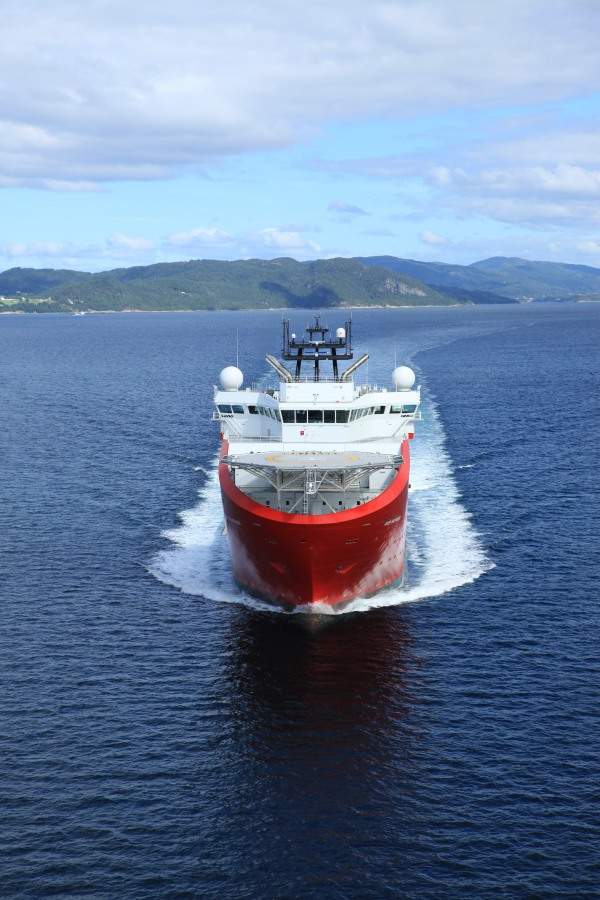Aker Wayfarer is an advanced multipurpose offshore construction vessel capable of undertaking subsea installation, floater installations, topside floatovers and removal operations.
It was built by STX OSV, a subsidiary of STX Europe, and delivered in October 2010. Aker Wayfarer is a sister ship of Skandi Aker, the largest monohull subsea well intervention vessel ever built. The two ships are the first intervention vessels to be classed with IMO mobile offshore drilling unit (MODU) code, allowing them to carry oil onboard.
Aker Wayfarer is owned by offshore engineering and construction firm Aker Oilfield Solutions and was on charter with Wellstream’s OSX-1 in Brazil during 2011 and 2012 and with Subsea-7 in 2013.
The vessel is currently on bareboat charter with Akastor until 2027. It will be on a five-year sub-charter with Petrobas to provide subsea intervention services offshore Brazil. The $465m service contract was awarded to Aker Oilfield Services (AKOFS), which became a part of Akastor in September 2014.
The offshore vessel will undergo modifications to perform as a deepwater subsea equipment support vessel (SESV). Ocean Yield ASA was awarded the contract to perform the required modifications in October 2014. The outfitting will take place at Kleven’s Myklebust Verft yard in Gursken, Norway.
When the retrofit is complete, the vessel will be able to perform installation and retrieval of subsea trees and modules, including subsea structures and manifolds.
Design, features and dimensions of Aker Wayfarer
Aker Wayfarer is of STX OSCV 06L ship design series, which was developed by STX Norway Offshore Design. The vessels of STX OSCV 06L series are designed and equipped for subsea operations with good sea-keeping and station-keeping abilities. Aker Wayfarer is an environmentally friendly vessel and meets DNV’s clean design requirements. The vessel has minimal exhaust emissions due to its low fuel consumption and its sustainable features include optimised power management, exhaust catalysers and low emission diesel engines.
In order to minimise the impact of heeling moment, each side of the vessel is fitted with a tank. The anti-heeling system is reinforced by employing three reversible propeller pumps, each of 1,500m³/h capacity. Two passive roll reduction tanks provide stability to the vessel during periodic roll movements induced by waves.
The gross tonnage of the vessel is 16,000t and the displacement at 8.5m draft is 22,820m3. She has an overall length of 156.9m. The length between perpendiculars is 137.7m.
The moulded breadth and depth to main deck are 27m and 12m respectively. The design draft to midship is 6.5m, while the maximum scantling draft to mid-ship is 8.5m.
Construction of Aker Wayfarer
Aker Oilfield Services entered into a contract with Aker Yards (now STX Europe) for the construction of the vessel in March 2007. The keel was laid in November 2008 and the vessel was launched in August 2009.
The steel hull of the vessel was manufactured by STX RO Offshore in Tulcea, Romania. Outfitting and completion were carried out by STX OSV in Søviknes, Norway.
The vessel features a 7.2m x 7.2m moonpool and helideck in the forward part. The helicopter deck, with a D-value of 20.9m and load capacity of 12.8t, can accommodate a single Sikorsky S-92 helicopter complying with UK Civil Aviation Authority (CAP) 437 regulations, Norwegian Civil Aviation Regulations BSL D 5-1 and The Homes and Communities Agency (HCA) regulations.
Rolls-Royce will supply the complete module handling system to be fitted to the subsea vessel under a £24m contract awarded by Ocean Yield in October 2014 to modify the vessel. The automated handling system will comprise a tower structure skid system, deepwater lifting system and electrical and control units. All equipment will be delivered in the first quarter of 2016. Synthetic fibre ropes will be fitted to the vessel to perform lifting operations in deep and ultra-deep waters.
Accommodation
Aker Wayfarer has accommodation facilities for 140 people in 41 double cabins, 29 single cabins, 25 officer-class single cabins, two client-class single cabins and two captain-class single cabins. A hospital is available for the people onboard.
Cargo capacity and equipment
The vessel features a cargo deck measuring 2,210m2 in area, with a load carrying capacity of 10mt/m2. The free deck area excluding cranes is 1,850m2.
The vessel can store 2,300m³ of fuel oil, 1,890m³ of fresh water and 8,900m³ of ballast water.
The vessel is equipped with two heave compensated (AHC) cranes, one with a safe working load (SWL) of 400t and the other with an SWL of 50t. An electro-hydraulic knuckle boom crane with a load lifting capacity of 3t at 15m is also available.
Propulsion and manoeuvring
The vessel’s power plant is comprised six MAN main engines and six Siemens generators. The total power generating capacity of the six main engines is 19,200kW. There is also an MTU engine with a Stamford emergency generator.
Main propulsion power is provided by a 4,000kW propeller with a high-lift rudder.
For smooth manoeuvring, Aker Wayfarer is equipped with six side thrusters. These include two tunnel thrusters, two retractable azimuth thrusters and two contra-rotating azimuth thrusters.
The vessel uses an IMO dynamic positioning (DP) Class-3 control system to automatically maintain its position and heading. Reference systems of the DP control system include two Seapath instruments, two differential global positioning systems (DGPS), HPR HiPaP 500 and Fanbeam. Four joystick panels are provided on the vessel’s bridge.








